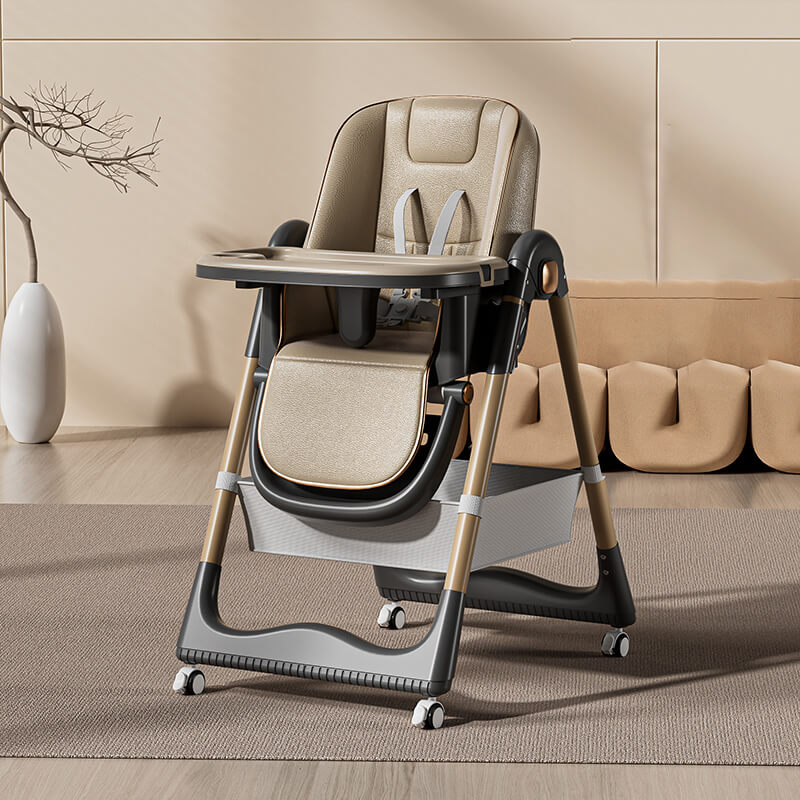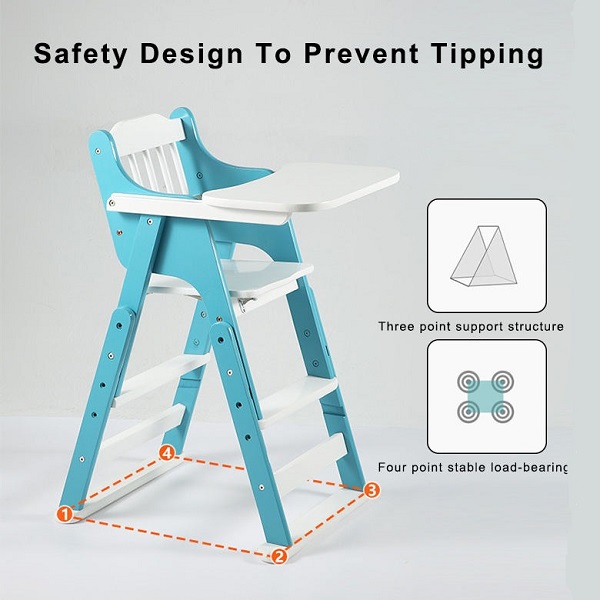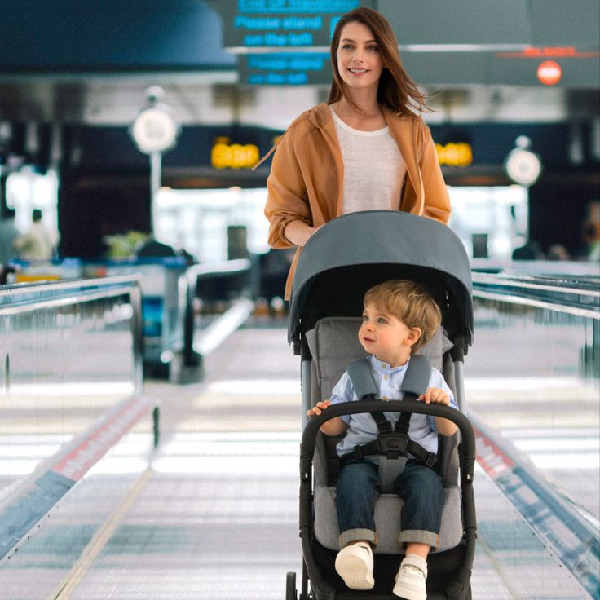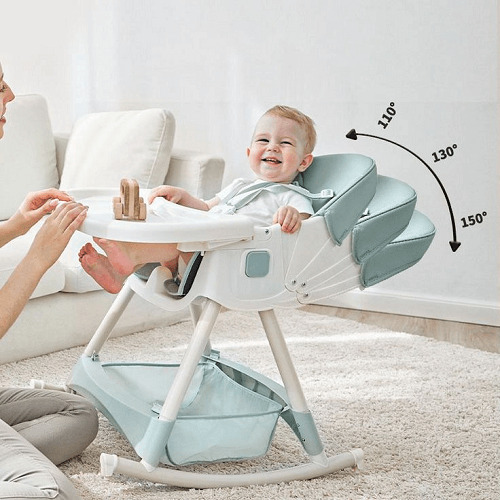The high chair, a staple in many households, plays a crucial role in a child’s development, but there comes a time when it’s necessary to transition to more age-appropriate seating options.
This article will explore the importance of this transition, the signs that indicate it’s time to stop using the high chair, and the various options available for the next stage of a child’s mealtime experience.
Importance of Transitioning from a High Chair
The high chair serves an essential purpose during the early stages of a child’s life, providing a secure and elevated seating option that allows for easy feeding and supervision.
However, as children grow older and gain more control over their movements and coordination, the high chair can become a hindrance, limiting their ability to participate actively in family meals and develop essential self-feeding skills.
Transitioning from a high chair to a more age-appropriate seating solution is an important milestone in a child’s development, as it promotes independence, safety, and a more comfortable mealtime experience.
When to Transition out of High Chair?
Most experts recommend transitioning out of the high chair between 18 and 24 months of age, or when the child reaches a height or weight limit specified by the high chair manufacturer.
There is no one-size-fits-all answer when it comes to the perfect time to transition a child out of a high chair, as each child’s development and readiness can vary. However, there are several key signs that can indicate when it’s time to consider moving on from the high chair:
1. Your Child Can Sit Steadily on His Own
Compared with ordinary chairs, kids’ high chairs have better support and safety. If your child can sit steadily without much support, the risk of falls or accidents when transitioning to a regular chair is reduced.
It shows they have developed the necessary core strength and balance to sit comfortably without the extra support provided by a high chair.
2. Your Child Can Crawl in and out Safely
Being able to crawl in and out of the high chair independently indicates your child has developed the motor skills needed to navigate safely. It also implies they have reached a level of physical coordination that allows them to move around without assistance.
If your child can easily climb in and out of a high chair, then a low, less restrictive regular chair will be much easier for them.
3. Your Child Is Able to Feed Himself Well
One of the main purposes of a high chair is to facilitate mealtime by providing a safe and secure space for your child to eat. If your child has mastered the skill of feeding themselves without much mess and can do so comfortably while seated at a regular table, then it may be time to retire the high chair.
At this time, children have fine motor skills and hand-eye coordination and should be moved to a normal chair and table for eating.
4. Your Child Shows Interest and Independence
As children grow, they naturally become more curious and eager to assert their independence. If your child shows enthusiasm for joining the rest of the family at the table and expresses a desire to eat like the adults do. You might as well fulfill his desire to be a little adult and get him out of the chair that only children use.
5. You Have Younger Children
If you have younger children who could benefit from using the baby feeding chair, it may be practical to stop using it with your older child once they have outgrown it. This allows you to pass it down to the next child who may still need the support and safety features it provides.
However, ensure that the older child is truly ready for the transition before making this decision, as pushing them too soon could cause discomfort or frustration during mealtime.
Transitioning from a High Chair to a Booster Seat
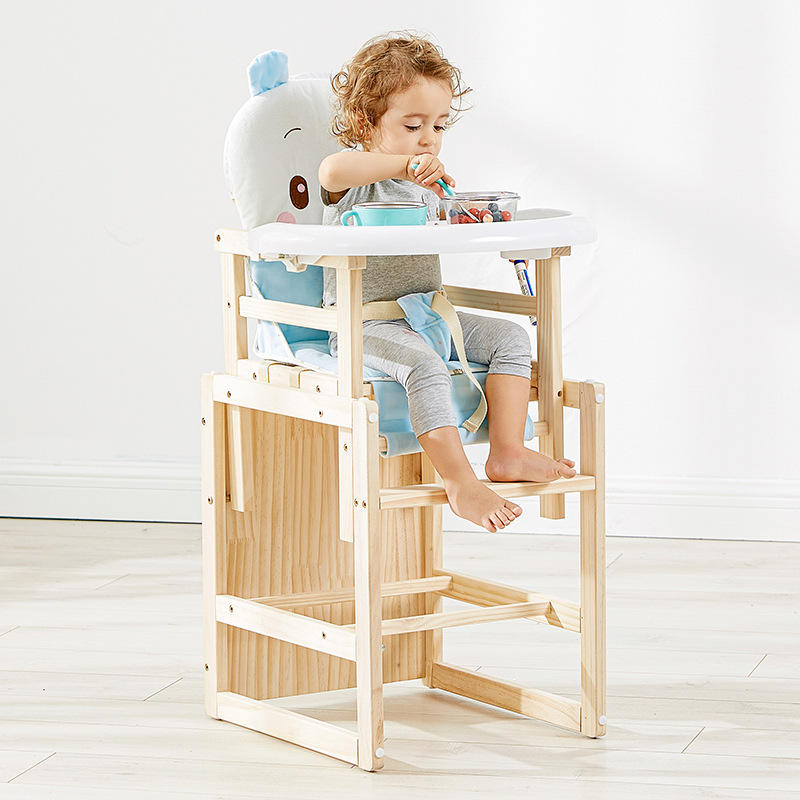
One common option for transitioning out of a high chair is a booster seat. High chairs are typically used for infants and younger toddlers, while booster seats are suitable for older toddlers who can sit up unassisted.
Booster seats provide a raised platform that allows your child to sit at the table with the rest of the family, while still offering some of the support and stability of a high chair. As your child becomes more comfortable and proficient in using the booster seat, you can gradually phase out the high chair and transition it to a regular chair at the table.
Make Sure Your Child’s Development Meets the Requirements
- Ensure that your child has reached the developmental milestones necessary for using a booster seat. This includes being able to sit up unassisted for extended periods without slumping over or falling, typically around 6 to 12 months of age.
- Check that your child has the motor skills and coordination needed to sit safely in a booster seat, such as the ability to grasp and hold onto objects and feed themselves.
Use Safety Considerations
- Choose a booster seat that is appropriate for your child’s age, weight, and height.
- Place the booster seat securely on a stable chair and ensure it is properly attached according to the manufacturer’s instructions.
- Teach your child how to use the booster seat correctly, including buckling the harness or straps and sitting properly during meal times.
Give Them Encouragement and Positive Reinforcement
- Transitioning to a booster seat can be a big step for your child, so offer praise and encouragement to boost their confidence.
- Use positive reinforcement techniques, such as offering verbal praise, clapping, or giving small rewards, to encourage your child to use the booster seat consistently.
- Be patient and supportive as your child adjusts to the new seating arrangement. Offer reassurance and comfort if they feel unsure or hesitant about the transition.
Transitioning from a High Chair to a Regular Chair
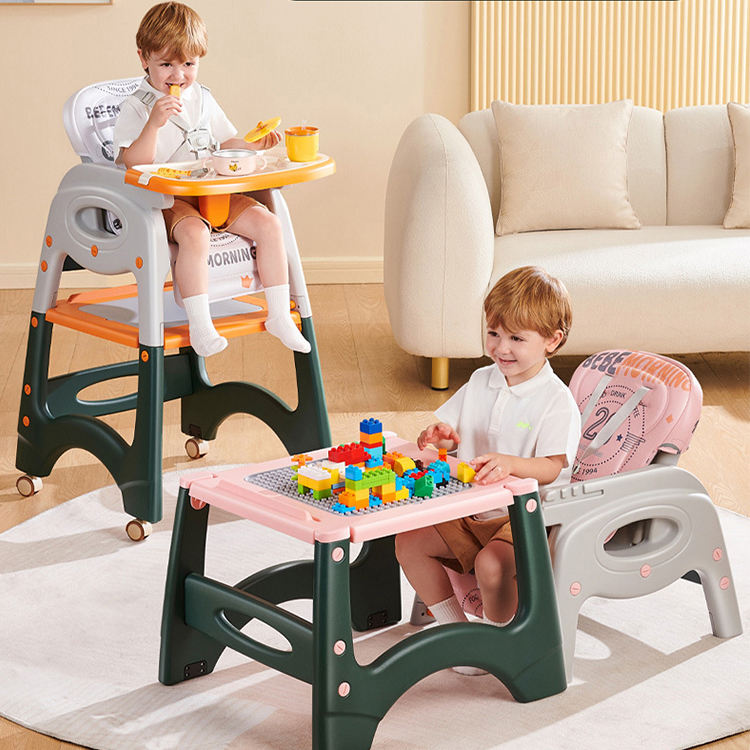
Another option for transitioning out of a high chair is to move directly to a regular chair at the table. High chairs take up space and can be cumbersome to clean. Regular chairs are easier to manage and integrate better into the household.
This approach may be suitable for children who have developed the necessary coordination, balance, and independence to sit comfortably and safely without the additional support of a high chair or booster seat.
Evaluate Your Child’s Readiness
- Ensure the child can sit up straight without support and maintain balance.
- The child should understand basic instructions and be willing to stay seated for meals.
Creating a Safe Environment
- Ensure the chair is stable and doesn’t tip easily. Non-slip mats under the chair can prevent slipping.
- Remove sharp objects and dangerous items from the child’s reach on the table.
- Initially, using safety straps on booster seats can help keep the child secure until they are used to sitting independently.
Some Practical Tips
- Use seat cushions to adjust the child’s height if needed.
- Ensure the child’s feet are supported to avoid discomfort. A small footstool can be helpful.
- Make sure the table setting is appropriate for the child’s height. Use child-sized utensils, cups, and plates to make it easier for them to eat independently.
Give Guidance and Be Patient
- Use this transition period to teach basic table manners. Encourage polite requests, waiting for others, and using utensils properly.
- Be patient and ready to adjust your approach based on your child’s needs and responses.
- Modeling positive behavior, and demonstrating good mealtime behavior yourself.
Common Mistakes to Avoid When Transitioning from a High Chair
Here are detailed insights into some of the most common mistakes and how to avoid them:
1. Rushing the Transition
Mistake: Moving the child to a regular chair too quickly before they are developmentally ready.
Solution: Assess the child’s physical and behavioral readiness. Ensure they can sit upright without support and follow basic instructions.
2. Skipping the Booster Seat
Mistake: Transitioning directly from a high chair to a regular chair without using a booster seat.
Solution: Use a booster seat to bridge the gap between the high chair and the regular chair. This helps the child adjust to sitting at the table at the right height and provides the necessary support during the initial stages.
3. Lack of Supervision
Mistake: Assuming the child can sit safely in a regular chair without adequate supervision.
Solution: Supervise the child closely, especially in the early stages of the transition. Ensure they are seated properly and not at risk of falling or tipping the chair over.
4. Forcing the Child
Mistake: Forcing the child to sit in the regular chair if they are resistant.
Solution: Encourage and motivate the child rather than forcing them. Use positive reinforcement, praise, and rewards to make the experience enjoyable. If the child is particularly resistant, take a step back and try again later.
5. Overloading the Child with New Rules
Mistake: Introducing too many new rules and expectations at once.
Solution: Introduce new rules gradually. Focus on one or two behaviors at a time, such as staying seated during meals or using utensils properly.
Conclusion
Transitioning from a high chair to more independent seating options is an important milestone in a child’s development. By paying attention to the signs that it’s time to make the switch and following best practices for a smooth transition, parents can help their children develop important skills and foster a sense of autonomy and responsibility during mealtimes.
Recommended Related Articles:
- Baby High Chair Wholesale Guide
- How to Import Baby Furniture from China?
- Best High Chair Manufacturers of 2024
- 14 Best High Chairs of 2024
- When Can Baby Begin Sitting in High Chairs?
- Baby Feeding Chair: A Complete Guide
- Top 10 High Chair Manufacturers in USA
- High Chair Vs Booster Seat: How to Choose?
- Baby Furniture for Small Spaces: Maximizing Your Nursery


